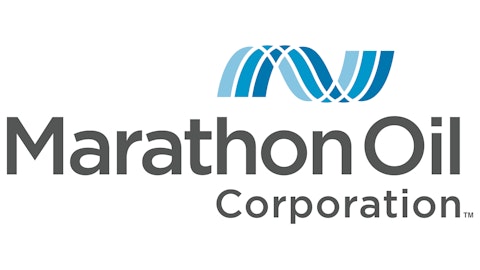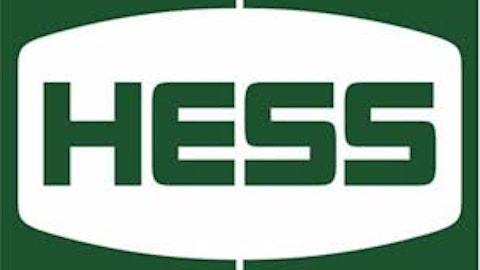
Photo credit: The Motley Fool.
Summer’s heat is finally starting to fade. With that, consumers also should begin to see some relief from higher summer gas prices. While risks to price spikes remain, including the crisis in the Middle East boiling over or a hurricane hitting the gulf, September is usually the time when gas prices begin descending.
According to GasBuddy.com, the U.S. average for the price of gas is $3.60 per gallon, which is about $0.20 cheaper than a year ago. Some Americans are paying well over that price, while others enjoy relatively cheaper gas. Ever wonder why that is? Let’s take a closer look at what goes into the price of gas to see what consumers are really paying for.

Source: EIA.gov.
The crude reality of gas prices
As the graphic to the right indicates, 70% of the price of gas as of July was directly related to the price of crude oil. Two months before that, crude oil represented 67% of the price at the pump. Because the price of crude oil varies, so does its portion of the price of gasoline. Basically, as the price of crude oil goes up, consumers can expect the price of gasoline to follow it higher.
We like to blame OPEC for our pain at the pump, and to some extent that’s true. Last year the U.S. imported about 10.6 million barrels of petroleum per day from about 80 different countries. Of that total, about 28% came from Canada, while OPEC countries represented around 40% of imports. That being said, only 40% of the petroleum consumed in the U.S. was imported last year, which was the lowest level since 1991. In fact, total oil imports dropped 6.9% last year, thanks to booming North American oil production.
That means 60% of our oil is home-made, so to speak. Many companies benefit from producing oil here at home each year, with one example being Northern Oil & Gas, Inc. (NYSEMKT:NOG). The company has really benefited from its small role in reducing our total oil imports. In fact, its revenue has grown by a three-year average of 237%, while its profits have jumped 122% over that same time frame. That growth has fueled its rise to No. 7 on Fortune’s list of fastest-growing companies. Northern Oil & Gas, Inc. (NYSEMKT:NOG) represents one of the many smaller U.S.-based oil companies that make money each time Americans fill up.
Refined profits
Next in line to take a share of the price of gas are refining companies such as Phillips 66 and Valero Energy Corporation (NYSE:VLO). What’s most interesting here is that the general trend since the financial crisis is that Americans have been driving less. However, despite booming production in North America, which has caused the price of oil in the U.S. to trade at a discount to the global benchmark, gas prices have remained high as refining companies export more gasoline, which is keeping the price elevated.
Phillips 66 said last year that it was planning to double its exports by 2014 in an effort to get better pricing for its refined products. Its top competitor, Valero Energy Corporation (NYSE:VLO), is also focusing on exporting increased volumes. In fact, last quarter alone it exported an average of 240,000 barrels a day, which is just over 9% of its total daily processing volume. Bottom line here: While the U.S. is producing more of its own oil, we’re also exporting more of our own gasoline, which is keeping prices at the pump higher.
Convenience comes with a price
A third piece to the gasoline puzzle involves the distributing and marketing costs. We like to blame the corner store for profiting from the price of gasoline, but truth be told, the margins per gallon are typically squeezed when the price of oil runs up. In fact, this past July, the average retail margin went from a fairly healthy $0.21 per gallon to less than $0.06.
This is a trend that’s hurting recent Valero Energy Corporation (NYSE:VLO) retail store spinoff CST Brands , which saw its motor fuel gross margin nearly cut in half from $0.30 in the second quarter of last year to just $0.17 this past quarter. Retailers typically feel just as much pain at the pump as consumers when the price of oil begins to jump.
The taxman cometh
The final piece of the puzzle are gasoline taxes. This is where consumers can sometimes see the biggest difference, especially when taking a long road trip. For example, I live in South Carolina, which enjoys the lowest gas prices in the country at $3.24 per gallon. Meanwhile, my parents in upstate New York are paying $3.85 a gallon, which is well above the national average. One of the reasons is that South Carolina hasn’t raised its gas tax for more than two decades. At about $0.35 per gallon, it’s nearly half of the $0.68 per gallon my parents pay in New York.
Final Foolish thoughts
While oil prices really drive the price of gasoline, it’s not the only thing fueling the price consumers pay. Instead, just as with real estate, gas prices can really be affected by location. That’s why prices can be a real pain for some, while barely an annoyance for others. However, because the bulk of the price is based on where oil is trading, the only real way to take the sting out of the pain at the pump, other than moving, is to invest in an oil company.
The article Gas Prices 101: What Are You Really Paying For? originally appeared on Fool.com is written by Matt DiLallo.
Fool contributor Matt DiLallo owns shares of Phillips 66. The Motley Fool has no position in any of the stocks mentioned.
Copyright © 1995 – 2013 The Motley Fool, LLC. All rights reserved. The Motley Fool has a disclosure policy.





